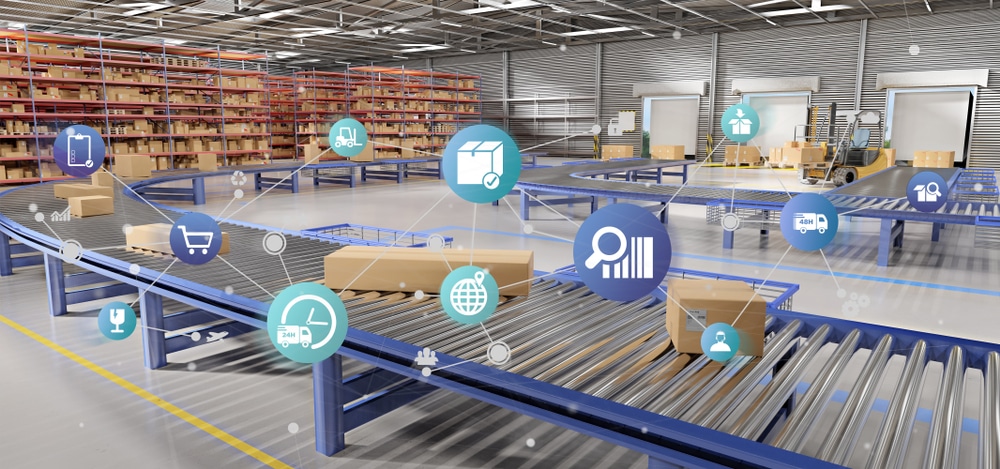
If you are in the business of logistics, then you know that third-party logistics (3PL) providers are a vital part of the supply chain. 3PLs provide critical support to companies that need help getting their products to market. But what makes a good 3PL? And how can 3PLs improve their performance and gain a competitive advantage?
In this blog post, we will discuss some best practices for 3PLs and offer tips for success. We will also introduce Logimax WMS, a tool that can help manage 3PL operations and improve business efficiency.
What Makes a Good Third-Party Logistics Provider (3PL)?
There are many factors that go into making a good third-party logistics provider.
First and foremost, a good 3PL Provider is one who can offer its customers comprehensive and integrated supply chain management solutions. This means that the provider has access to the necessary resources to handle all aspects of the customer’s supply chain needs, from transportation and warehousing to inventory management and order fulfillment.
Although, not all 3PLs handle every aspect of the supply chain. Some specialize in specific areas, such as transportation or warehousing, for example. However, it is important to offer a comprehensive solution to your customers within the range of services you provide.
In addition, a good 3PL Provider is one who is able to offer its customers customized solutions that meet their specific needs. No two businesses are alike, and each has its own unique set of supply chain challenges. A good provider will take the time to understand the customer’s business and develop a solution that is tailored to their individual needs.
A good provider will also be proactive in their approach to the customer’s experience, always having the goal of improving customer service. They should have a team of highly skilled and knowledgeable customer service representatives who are available to help their clients with any issues that may arise.
Finally, a good 3PL Provider is one who is always looking for ways to improve and innovate. The logistics industry is constantly evolving, especially with the online commerce evolution. It is important for providers to keep up with the latest trends and technologies. By investing in new tools and processes, providers can maintain a competitive edge and offer their customers the best possible service.
Today’s challenging market and business environment mean that the value supply chains provide is greater than ever. 3PLs with a unique value proposition can reap the rewards of their forward-minded logistics efforts.

3PL Best Practices: For Third-Party Logistics Providers and Supply Chain Companies
Determine and Measure Key Business Metrics
The first step in implementing best practices for 3PLs is to determine the key business metrics that will be used to measure success. These metrics will vary from business to business, but some common examples include on-time delivery, order accuracy, transportation costs, and customer satisfaction.
Once the key metrics have been identified, it is important to track them on a regular basis and use them to inform decision-making and business process improvement.
Invest in Technology
Technology can be a powerful tool for 3PLs. By investing in warehouse management systems (Logimax WMS), transportation management systems (TMS), radio frequency identification (RFID), digital payment processes, and other technologies, providers can automate many of the tasks associated with managing the whole supply chain. This includes tasks such as order processing, inventory management, and recording shipment transportation progress.
This can free up time and resources that can be reinvested in other areas of the business. In addition, technology can provide benefits like smart contract management, real-time shipment visibility, as well as the ability to track data and KPIs. This can help a company achieve valuable insights into its operations and identify areas for improvement.
Develop Strong Partnerships
3PLs rely on partnerships with transportation carriers, warehousing facilities, and other suppliers to support their operations. It is important for providers to develop strong relationships with these partners and establish clear lines of communication.
By building stronger partner and better carrier relationships, and collaborating closely, providers can optimize their operations and provide their customers with the best possible service. Not to mention lowering freight spend and other costs.
Cross Train Employees
In order to be successful, 3PLs must have a team of highly skilled and knowledgeable employees. One way to ensure that employees are prepared for the challenges of the job is to cross-train them in multiple areas of the business.
This will give them a better understanding of how the different parts of the supply chain work together and allow them to more effectively solve problems.
Ensure Your Inventory is Accurate
An accurate inventory is essential for 3PLs. If a provider does not have an accurate count of the products in their warehouse, they will be unable to properly fulfill orders and may end up losing money.
There are many ways to improve the process of managing inventory, such as implementing barcoding and RFID technologies, conducting regular physical counts, and using data analytics to identify patterns.
Perform Cycle Counts
An effective way to manage inventory levels and prevent stock-outs is to perform regular cycle counts. By counting inventory on a regular basis, providers can identify discrepancies quickly and take corrective action. This will help to ensure that customer demand is always met by having products in stock.
Streamline Your Receiving Process
The receiving process is one of the most important aspects when creating a more efficient logistics operation. In order to make this process more efficient, providers should use barcodes and RFID tags, set up an accurate receiving schedule, and train employees on proper receiving procedures. By taking these steps, providers can improve the efficiency of their operations and reduce the risk of errors.
Keep a Clean and Organized Facility
A well-organized and clean facility is essential for 3PLs. Not only does this create a better working environment for employees, but it can also help to improve efficiency and accuracy. Providers should create an organized storage system, implement regular cleaning schedules, and use labels and signage to clearly identify products.
Invest in Robotics and Automation (Only if it Will Increase ROI)
Robotics and automation can be great ways to improve the efficiency of 3PLs. By investing in these technologies, providers can reduce the need for manual labor, minimize errors, and increase productivity.
However, it is important to note that not all automation technologies are right for every business. Before investing in robotics and automation, providers should carefully consider the needs of their operation and the potential return on investment.
Implement Warehouse Zone Planning
Warehouse zone planning is a great way to improve the efficiency of 3PLs. By creating zones for different types of products, providers can more easily track inventory and fulfill orders. Additionally, this method can help to reduce congestion in the warehouse and make it faster and easier for employees to move around, thereby yielding lower costs.
Optimize Putaway Processes
The putaway process is one of the most important steps in third-party logistics. In order to optimize this process, providers should use data analytics to identify patterns, establish efficient storage locations, and train employees on proper procedures. By taking these steps, providers can improve the efficiency of their operations and reduce the risk of errors.
Choose the Right Picking Process
There are many different picking processes that 3PLs can use. The most important thing is to choose a process that will work best for the specific needs of your operation. Some factors to consider when choosing a picking process include order volume, product mix, and storage density.
Logimax WMS: A Tool Designed for Third Party Logistics Companies
In addition to following the best practices outlined above, 3PLs can also use Logimax WMS to help manage their operations. Logimax WMS is a cloud-based warehouse management system that provides users with the tools they need to streamline their operations and improve efficiency.
Some of the features offered by Logimax WMS include:
- Automated Receiving and Putaway: With Logimax WMS, providers can automate their receiving and putaway processes, which will help to improve accuracy and reduce labor costs.
- Inventory Management: Logimax WMS provides users with the ability to track inventory in real-time, which will allow them to avoid stock-outs and ensure that orders are fulfilled on time.
- Order Fulfillment: Logimax WMS offers a number of features to help users fulfill orders more efficiently, including order picking, packing, and shipping.
- Reporting: Logimax WMS provides users with the ability to generate reports that will help them track their performance and identify areas for improvement.
By investing in Logimax WMS, Third Party Logistics companies can improve their efficiency and offer their customers a better experience. To learn more about Logimax WMS, visit our website or contact us today.
Conclusion
Third-Party Logistics companies play a vital role in supply chains and it is important for them to follow best practices in order to be successful. By using data to their advantage, streamlining their processes, investing in training, and using a comprehensive WMS, providers can improve their operations and provide their customers with a better experience. Following this advice can make all the difference for freight and logistics industry companies.
If you are looking for ways to improve your 3PL business, then consider implementing Logimax WMS. It is a powerful tool that can help you manage your operations more effectively and improve your bottom line.
Contact us today to learn more about Logimax WMS and how it can help your business.



